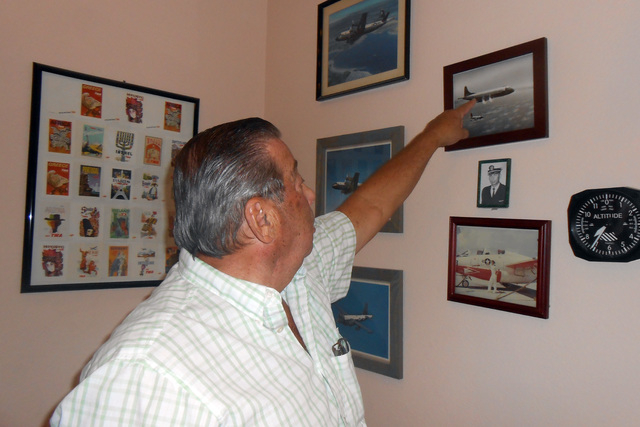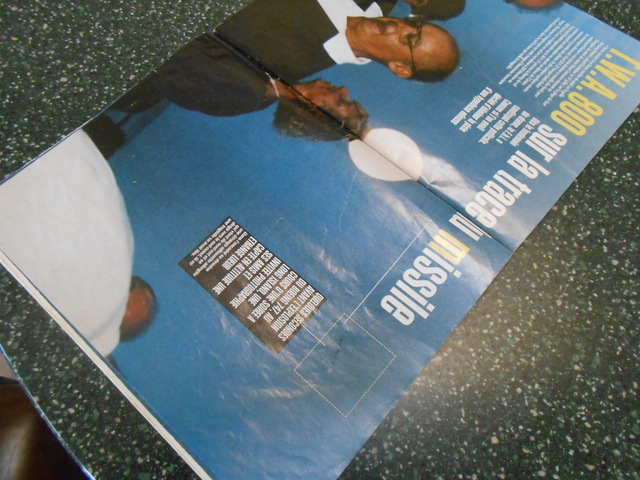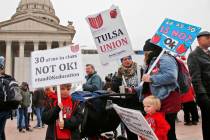Former TWA pilot says he narrowly missed manning ill-fated flight
Sun City Summerlin resident Bob Kavula had an angel on his shoulder for 33 years when he was a commercial airline pilot for TWA.
In 1996, he had the option to work an open captain position on ill-fated TWA Flight 800. International flights require more than one pilot.
“They go by seniority, so they offered (Flight 800) to me, and I said, ‘I’m doing fine the way I am,’ ” he said. “I was already (assigned to) the Cairo flight, which was a 767. Flight 800 was a 747. I liked the seven six better.”
A more junior pilot took Flight 800. Kavula’s plane was in line to take off when he heard the sobering news — Flight 800 had exploded and crashed into the Atlantic Ocean off the coast of Long Island, N.Y.
“We lost a lot of friends that day,” said his wife, Dale.
Kavula’s first solo flight was in a T-34 for the Navy. It was an acrobatic propeller-driven plane.
“I felt very confident,” he said. “It was a lot of fun, don’t get me wrong. The first flight, you weren’t allowed to go anywhere but around the airport.”
Five years later, in 1965, he was hired by TWA. He flew 707s and Convair 880s, both four-engine jets.
“The 707 was a great airplane,” he said. “… Some of the early ones weren’t much fun to fly at all. They were underpowered and used what they called water injection for takeoff. They’d blow out this big, black smoke.”
A flight in Tampa, Fla., saw him take off with a tropical storm approaching. Barrelling down the runway, the 727 was being pushed sideways, and Kavula said he used all his strength to keep his rudder and nose gear turned, trying to keep the plane straight. He later learned the true wind speed had been 15 knots over the legal limit.
When piloting a 727, Kavula took off from St. Louis on a rainy night and lost one of his generators. It was the unit that powered communications.
He elected to turn around and land with only partial braking and flaps.
“But we’d disappeared off the radar screen,” he said. “Our transponder was off.”
The tower was sure the worst had happened. Kavula and his crew were reassigned to a flight the next morning. That flight had an ex-cap, an off-duty pilot using the jump seat, who informed Kavula that he “should have been here last night. They think one of our planes crashed.”
“Actually,” Kavula recalled telling him, “you’re sitting here with the crew.”
In his career with TWA, he estimated he shut down eight or nine engines, as well as dealt with small fires and electrical problems.
“But did I feel scared? No,” he said. “I felt whatever happened, we were trained for … and please don’t make it sound scary.”
He flew all the various types of jets in the airline’s fleet — DC-9, 727, 757 and two wide bodies, the 767 and 747. He said he liked the 767 best “because it had a good power-to-weight ratio. … The power it had, it made it more of a hot rod.”
Kavula said he plans to write a book on his experiences as a pilot.
The loss of TWA Flight 800 still haunts him, he said, as he played a documentary that looked into the tragedy on his big-screen TV.
One scene showed the burning wreckage floating on the water.
“See those flames?” he said, pointing. “That’s what I saw when I was flying over. … That could have been me.”
Contact Summerlin Area View reporter Jan Hogan at jhogan@viewnews.com or 702-387-2949.















